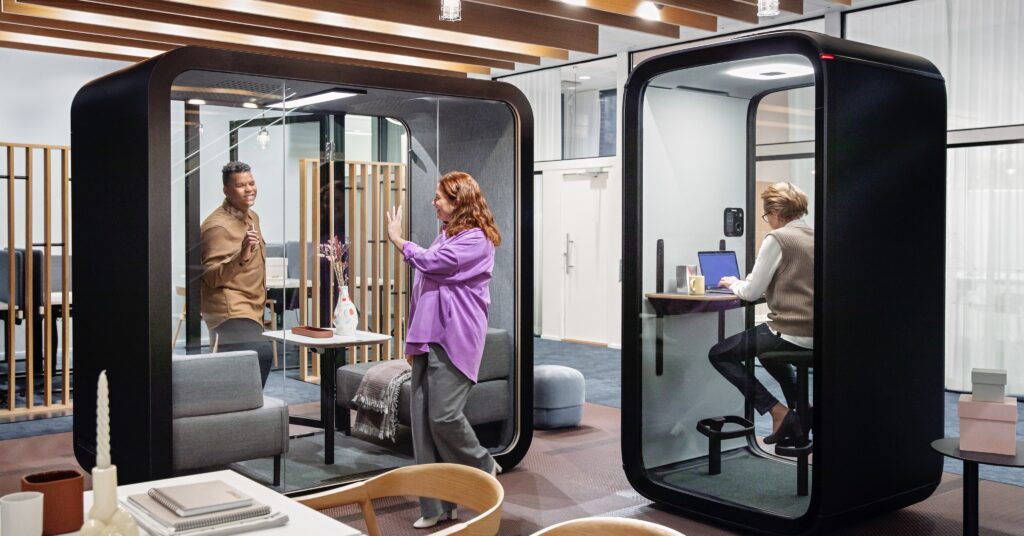In today’s dynamic work environment, leadership in remote working and hybrid teams has become increasingly crucial. With the rise of remote work and the blending of in-person and virtual teams, leaders must adapt their management styles to ensure cohesion and productivity. Effective remote people management skills are essential for building a strong organizational culture and fostering collaboration among team members, regardless of their physical location.
The concept of workplaces has significantly evolved in recent years, moving from the traditional office setting to a more hybrid approach. This shift has been fueled by advances in technology, changing attitudes towards work-life balance, and the global pandemic that forced organizations to adapt their operations quickly.
Hybrid workplaces blend the physical office environment with remote work options, allowing employees to choose where and how they work best. This flexibility has become increasingly popular among both employees and employers, with studies showing increased productivity, job satisfaction, and employee retention in hybrid work models. Hybrid organizations are those that embrace a combination of in-person and remote work, offering a flexible work environment tailored to individual preferences. These organizations often prioritize communication, collaboration, and technology to ensure seamless integration between virtual and physical workspaces.
In hybrid organizations, leaders must be adept at managing diverse teams, fostering a culture of trust and accountability, and leveraging technology to support remote collaboration. This requires a shift in leadership styles from traditional top-down approaches to more inclusive and adaptive strategies that empower employees to thrive in a hybrid work environment.
The rapid shift to remote work during the pandemic has accelerated the adoption of hybrid models, prompting organizations to reassess their workplace structures and policies. Employees have grown accustomed to the benefits of remote work, such as flexibility, reduced commute times, and improved work-life balance, leading to increased demand for hybrid work arrangements.
As remote work becomes more prevalent, organizations are reevaluating their office spaces, technology infrastructure, and communication channels to support a hybrid workforce. Leaders must prioritize employee well-being, provide adequate resources for remote work, and cultivate a sense of belonging among distributed teams to ensure success in a hybrid setting.
Hybrid teams offer a unique blend of perspectives, skills, and experiences that can drive innovation and creativity within organizations. By combining the best of in-person collaboration with the flexibility of remote work, hybrid teams can overcome geographical barriers, tap into diverse talent pools, and adapt quickly to changing business needs.
In a hybrid team setting, employees can benefit from increased autonomy, improved work-life balance, and enhanced productivity. Leaders can leverage the strengths of both remote and in-person work environments to create a dynamic and agile workforce that is well-equipped to navigate today’s complex and ever-evolving business landscape. While hybrid teams offer many advantages, they also present certain challenges that leaders must address to ensure effective collaboration and performance. Communication barriers, maintaining team cohesion, and performance management are among the key areas of concern for organizations transitioning to a hybrid work model.
One of the biggest challenges in managing hybrid teams is overcoming communication barriers that arise from the physical distance between team members. Misunderstandings, lack of clarity, and information asymmetry can hinder collaboration and decision-making, leading to decreased efficiency and morale within the team.
To address communication challenges in a hybrid team setting, leaders must establish clear communication protocols, leverage technology tools for virtual meetings and collaboration, and encourage regular check-ins to ensure alignment and transparency among team members. Building a culture of open communication and feedback can help bridge the gap between remote and in-person employees, fostering trust and collaboration across the team.
Maintaining team cohesion in a hybrid work environment can be challenging due to the lack of face-to-face interactions and physical proximity among team members. Without the informal interactions and social connections that typically occur in an office setting, remote and in-person employees may feel disconnected from each other, leading to feelings of isolation and disengagement. Leaders must proactively foster a sense of community and belonging within the team by organizing virtual team-building activities, promoting cross-functional collaboration, and encouraging open dialogue among team members. By creating opportunities for social interaction, shared goals, and mutual support, leaders can strengthen team cohesion and build a unified team culture that transcends physical boundaries.
Performance management in a hybrid work setting requires a thoughtful approach that takes into account the unique challenges and opportunities presented by remote and in-person work environments. Leaders must establish clear performance metrics, set realistic goals, and provide regular feedback to employees to ensure accountability and performance excellence across the team. By leveraging technology tools for tracking and monitoring performance, leaders can gain insights into individual and team progress, identify areas for improvement, and celebrate achievements in a timely and constructive manner. Performance management systems that are flexible, transparent, and tailored to the needs of a hybrid workforce can drive engagement, motivation, and overall success within the team.
Leaders can foster trust by setting clear goals, providing regular feedback, and demonstrating transparency in decision-making. Encouraging open communication and empowering team members to take ownership of their work can help create a culture of accountability. To effectively manage remote teams, leaders can leverage a variety of tools and technologies designed to enhance communication, collaboration, and productivity. Project management software, virtual meeting platforms, and instant messaging apps can help streamline workflows and keep team members connected in a virtual environment.
In conclusion, effective leadership in remote working, hybrid teams, and hybrid organizations is crucial for successful remote people management. By embracing flexibility, leveraging technology, and prioritizing trust and transparency, leaders can navigate the challenges of managing remote and hybrid teams with confidence. It is essential for leaders to continuously learn and evolve in this ever-changing landscape to drive organizational success.
